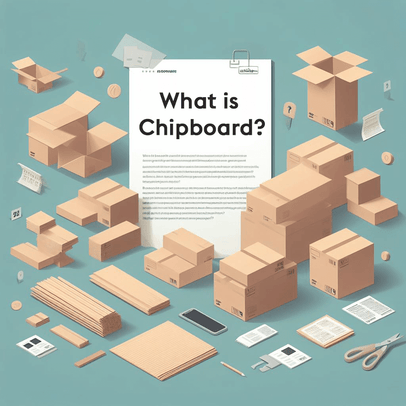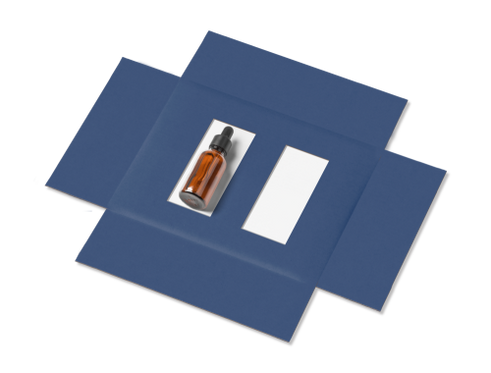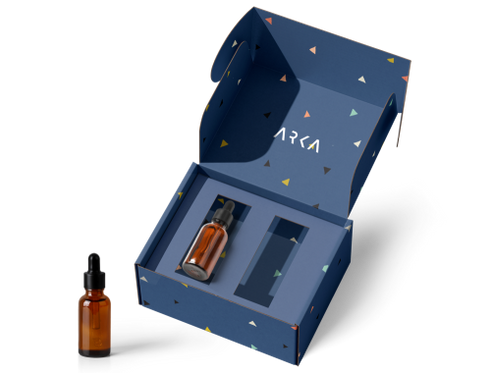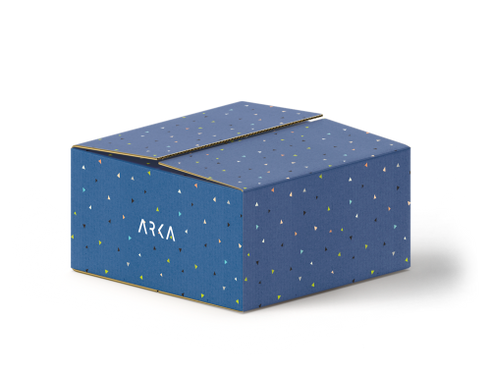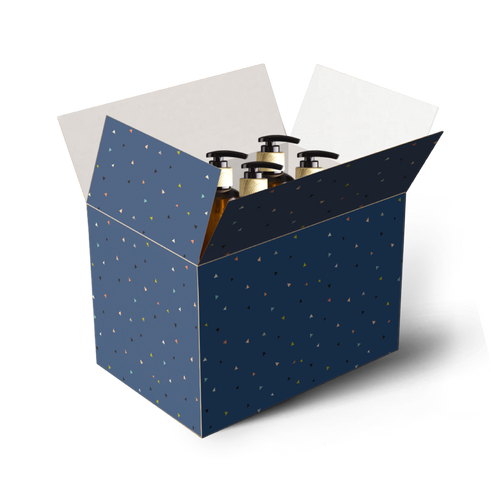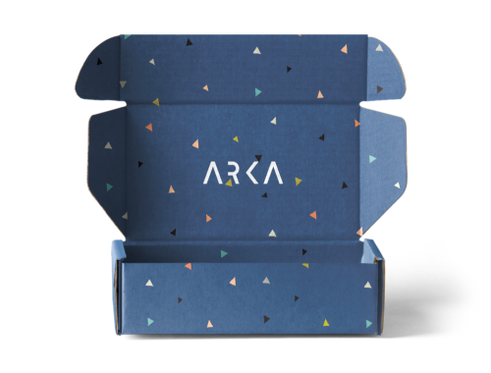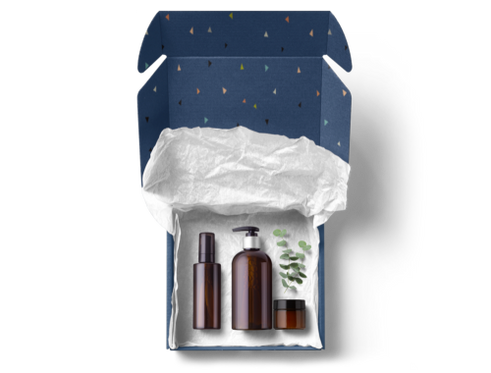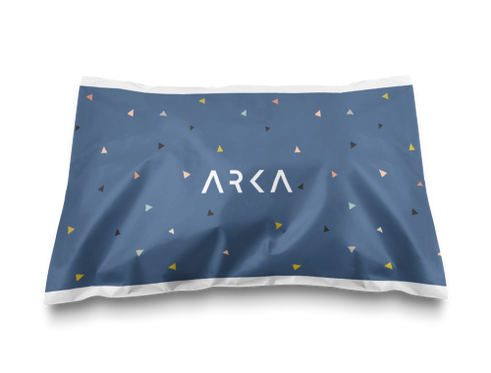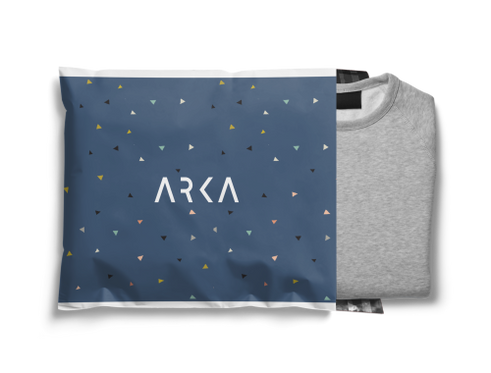Packaging 101: The Complete Guide
- Packaging 101
- Types of Packaging
- Aseptic Packaging
- Blister Packaging
- Biodegradable Packaging
- Bulk Packaging
- Carbon Neutral Packaging
- Circular Packaging
- Clamshell Packaging
- Compostable Packaging
- Cornstarch Packaging
- Corrugated Packaging
- Discreet Packaging
- Ecommerce Packaging
- Flexible Packaging
- Frustration Free Packaging
- Retail Packaging
- Secondary Packaging
- Smart Packaging
- Sustainable Packaging
- What is a PR Package?
- What is a Poly Mailer?
- Packaging Design Ideas
- AI Packaging Design
- Bakery Packaging Ideas
- Bath Bomb Packaging Ideas
- Bath Salt Packaging Ideas
- Body Butter Packaging Ideas
- Body Oil Packaging Ideas
- Body Scrub Packaging Ideas
- Brownie Packaging Ideas
- Cake Packaging Ideas
- Cake Pop Packaging Ideas
- Candle Packaging Ideas
- Candy Packaging Ideas
- Canva Packaging Design
- Chocolate Packaging Ideas
- Cinnamon Roll Packaging Ideas
- Clothing Packaging Ideas
- Coaster Packaging Ideas
- Coffee Bag Design Ideas
- Cookie Packaging Ideas
- Cosmetics Packaging Design
- Cotton Candy Packaging Ideas
- Cupcake Packaging Ideas
- DIY Packaging Ideas
- Dog Treat Packaging Ideas
- Food Packaging Ideas
- Empanada Packaging Ideas
- Etsy Packaging Ideas
- French Fries Packaging Ideas
- Frozen Food Packaging Ideas
- Hair Extension Packaging Ideas
- Handbag Packaging Ideas
- Jewelry Packaging Ideas
- Keychain Packaging Ideas
- Lash Packaging Ideas
- Lip Gloss Packaging Ideas
- Macaron Packaging Ideas
- Minimalist Packaging Ideas
- Mug Packaging Ideas
- New Employee Welcome Kit Ideas
- Packaging Colors
- Packaging Inserts Ideas
- Packaging Logo Design
- Packaging Typography
- Perfume Box Design Ideas
- Pizza Box Design Ideas
- Popcorn Packaging Ideas
- Scarf Packaging Ideas
- Skincare Packaging Design Ideas
- Soap Packaging Ideas
- Sock Packaging Ideas
- Sticker Packaging Ideas
- Sunglass Packaging Ideas
- Sustainable Packaging Ideas
- Tea Packaging Ideas
- Wax Melt Packaging Ideas
- Weed Packaging Ideas
- T-Shirt Packaging Ideas
- Wine Packaging Design Ideas
- What is a Packaging Engineer?
- Types of Packaging Materials
- Chipboard vs Cardboard
- Compostable Packaging Materials
- Alternatives to Plastic Packaging
- Edible Packaging Materials
- Food Packaging Materials
- Are Poly Mailers Recyclable?
- How to Recycle Cardboard Boxes
- How to Recycle Packaging Materials
- Medical Device Packaging Materials
- Mono Material Packaging
- Pharmaceutical Packaging Materials
- Plastic Food Packaging
- Protective Packaging Materials
- Reusing Packaging Materials
- Types of Packaging Foam
- Void Fill Packaging
- What is Chipboard?
- What is Kraft Paper?
- Offset vs Digital Printing
- RGB vs CMYK Printing
- Screen Printing vs Digital Printing
- Screen Printing vs Sublimation
- What is a Dieline in Packaging?
- What is Die Cutting?
- What is Digital Printing?
- What is Flexographic Printing?
- What is Glassine Paper?
- What is Offset Printing?
- What is Spot UV Printing?
- Why is 300 DPI Good for Printing?
- How to Estimate Shipping Costs
- How to Pack Glass for Shipping
- How to Mail a Bubble Mailer
- How to Make a Shipping Label
- How To Measure Box Dimensions and Sizes
- How to Ship Alcohol
- How to Ship Artwork
- How to Ship Books
- How to Ship a Cake
- How to Ship Candles
- How to Ship Clothes
- How to Ship Cookies
- How to Ship Food
- How to Ship a Laptop
- How to Ship a PC
- How to Ship Plants
- How to Ship Shoes
- How to Ship Vinyl Records
- Packaging Symbols
- Shipping Large Items
- What is a Delivery Exception?
- What is Shipping Insurance?
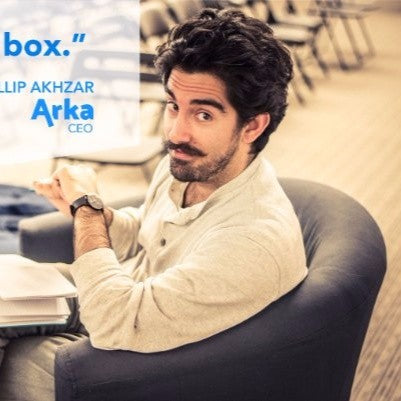
Discover Phillip Akhzar’s journey, the Founder and CEO of Arka, bringing 16 years of expertise in packaging and supply chain logistics. Read more on Arka.
What is Chipboard Used for? Understanding the Basics
When it comes to versatile and eco-friendly materials in construction and design, chipboard stands out. But what is chipboard? In essence, chipboard is a type of engineered wood made from wood chips, sawmill shavings, and resin. It's compressed and heated to create sturdy sheets used in various applications.
One of the primary advantages of chipboard is its strength; Despite being a composite material, chipboard is surprisingly robust, making it ideal for constructing furniture, flooring and cabinets. Its durability ensures that products made from chipboard can withstand daily wear and tear, promising long-lasting performance.
Beyond strength, chipboard champions sustainability. Crafted from recycled wood, it's a green choice for environmentally aware projects; Plus, the chipboard itself is recyclable, reducing its ecological footprint.
Chipboard finds its place across industries. In construction, it’s a budget-friendly substitute for wooden panels, especially in temporary structures. Furniture makers adore it for creating durable yet affordable pieces. DIY enthusiasts value its user-friendly nature and cost-effectiveness.
Chipboard isn't one-size-fits-all. It comes in diverse thicknesses, from 9mm to 25mm, offering design flexibility. Moreover, it comes in types like plain chipboard and melamine-faced chipboard, each tailored for specific needs.
2 Primary Types of Chipboard
Chipboard, a versatile material found in two main types – brown and white, plays a vital role in many industries. Let's explore these types:
Brown Chipboard
Brown chipboard, crafted from recycled paper, is strong and eco-conscious; Its durability makes it perfect for packaging. It's commonly used in:
• Boxes and Cartons: Crafted into robust boxes, it protects various items during transportation.
• Backing Boards: Supports notepads and notebooks, providing a sturdy base.
• Protective Layer: Shields delicate items, ensuring they reach their destination safely.

White Chipboard
White chipboard is noted for its smooth surface and clean appearance and is favored in applications where a polished look is essential. Its versatility makes it suitable for various packaging needs. Its common uses include, but are not limited to:
• Cosmetic Packaging: Many beauty products are elegantly packaged using white chipboard.
• Food Packaging: Chocolates and gourmet items find a home in boxes made from white chipboard.
• Promotional Materials: Enhances the presentation of pamphlets and brochures, giving them a professional touch.
The Key Benefits of Chipboard
When it comes to eco-friendly and versatile materials, chipboard steals the limelight. Since we already know what chipboard is, let's explore some of its key benefits.
• Sustainability at its core: Chipboard, sometimes called particleboard, emerges from the fusion of recycled wood particles and adhesives. This green composition makes it a preferred choice for environmentally aware businesses and individuals. Its production significantly reduces the need for fresh timber, making a substantial contribution to a more eco-friendly planet.
• Customizability: One of the chipboard's standout qualities is its tailor-made adaptability. Irrespective of your project's specific requirements, chipboard is available in various thicknesses, catering to a diverse range of applications. This adaptability guarantees a seamless integration into a wide array of projects, from crafting furniture to construction.
• Cost-Efficiency in every sheet: For budget-conscious businesses, chipboard presents a cost-effective solution without compromising quality. Its affordability doesn't equate to fragility; chipboard remains sturdy and durable, rendering it a pragmatic choice for both small-scale undertakings and large industrial ventures.

• Lightweight, yet remarkably robust: Despite its lightweight character, chipboard boasts extraordinary strength. It can shoulder substantial loads, rendering it an excellent choice for crafting resilient furniture and sturdy packaging materials. This distinctive blend of lightness and strength transforms it into a valuable asset in industries where both attributes are crucial.
• Puncture-resistant and space-economical: The composition of chipboard confers puncture-resistant qualities, ensuring the safeguarding of goods during transportation. Furthermore, its solid structure implies that products necessitate less space for shipping, optimizing storage and transportation, ultimately conserving both time and resources.
• Stability and protection: Chipboard provides stability to structures, furniture, and assorted products. Its reliable composition assures that items fashioned from chipboard are robust and enduring, adding an extra layer of safeguarding to the materials it supports.
6 Common Uses of Chipboard in Packaging
When it comes to sustainable and versatile packaging materials, chipboard takes the lead. since we already know what chipboard is and what it is made of, we must explore its common uses in packaging.
Folding Cartons
Chipboard finds its most common application in custom folding carton boxes widely used in supermarkets and retail stores; Its robust yet flexible nature allows easy crafting. These cartons often seen on store shelves, owe their sturdiness and appealing designs to chipboard.

Rigid Boxes
Rigid boxes, synonymous with luxury products, rely on chipboards for their durability. Thicker and resilient, these boxes provide a premium touch, ensuring the safety of delicate items. But is chipboard strong? Yes! The chipboard's strength preserves the box's shape, guaranteeing secure transit and a sophisticated unboxing experience.

Inserts and Dividers
For fragile items like glassware or electronics, efficient packaging is vital. Chipboard custom inserts and dividers are tailor-made to fit products, eliminating movement and minimizing damage risks snuggly. These inserts are customizable, ensuring a perfect fit for any product shape and offering a professional presentation touch.

Display Packaging
Chipboard, sturdy and reliable, finds a creative home in display packaging; Its durability allows the crafting of captivating product displays in stores. Tailored chipboard structures ensure products fit perfectly, creating visually appealing displays in retail, spanning from electronics to cosmetics. This blend of aesthetics and strength makes chipboard display packaging a go-to choice.

Chipboard Pads
Chipboard pads are available in various thicknesses and play a crucial role as inserts and dividers within packages. These pads offer top-notch protection for delicate items during transit; The thickness of chipboard pads varies based on the specific application, ranging from thin and light pads for fragile items like glassware to thicker ones for heavier products like electronics. This adaptability guarantees customized protection for diverse products.

Specialized Packaging
When we talk about packaging, it's all about being adaptable and long-lasting. Chipboard, which is crafted from recycled paper, is becoming increasingly popular for its ability to serve different unique packaging needs flexibly. Here are a few specialized uses of chipboard in packaging:
• Medical and pharmaceutical packaging: Chipboard acts as a guardian ensuring the secure transportation of medical supplies and pharmaceuticals, shielding them from damage and contamination during transit.
• Electronics packaging: The realm of electronics demands secure packaging, and chipboard emerges as the hero; It offers essential cushioning, protecting delicate electronic components from shocks and vibrations.
• Retail packaging: Chipboard takes the spotlight in custom retail boxes providing a sturdy yet lightweight solution for displaying products elegantly on store shelves.
• Subscription boxes: Chipboard is the preferred choice for subscription box services crafting eye-catching and durable packaging that enhances the unboxing experience for customers.
• E-commerce packaging: Chipboard shipping boxes stand tall as champions of strength and versatility; They safeguard items during shipping and earn eco-friendly points, aligning seamlessly with the green initiatives of online businesses.
• Gift packaging: Chipboard's versatility makes it the darling of aesthetically pleasing custom gift boxes; Its durability ensures that gifts reach their recipients in pristine conditio, enhancing the joy of gifting.

• Jewelry Packaging: Chipboard offers an elegant and secure solution for packaging jewelry items; Its smooth surface becomes a canvas for creative branding and design elements, adding a touch of sophistication to every piece. You can also check Arka’s custom jewelry boxes that ensure a memorable unboxing experience for customers.
• DVD and CD Cases: Chipboard is a popular choice for DVD and CD cases standing resilient against wear and tear while keeping discs safe from scratches and other damages.
• Cosmetic Packaging: Chipboard gracefully handles the weight and forms of various cosmetic products; It provides an excellent surface for printing intricate designs and branding, enhancing the visual appeal of cosmetic packaging. At Arka, we also create top-notch custom cosmetic boxes for premium brands; let’s create your brand packaging together.
• Promotional Packaging: Chipboard plays a pivotal role in creating attention-grabbing promotional materials. Its structural integrity allows for innovative designs, making promotional packaging visually striking and impactful.
Final Thoughts
We are sure that now you have all the answers to your question “what is chipboard”. In simple terms, chipboard is like a superhero for packaging; It's super versatile, tough, and great for the environment. It's made from recycled paper, so it's both eco-friendly and can be used in many different ways.
Whether it's protecting fragile electronics or making products look fantastic on shelves, chipboard does it all. As more industries look for packaging that's both eco-conscious and reliable, chipboard shows how creative we can be with materials.
Here at Arka, we can help you find the perfect solution to keep your products safe, looking great, and good for the planet.
FAQs on Chipboard Packaging
What is chipboard made from?
Chipboard is crafted from reclaimed paper, compressed, and bonded to form a strong, adaptable material.
Can chipboard packaging be customized with printing and branding?
Absolutely, chipboard packaging is easily customizable with printing and branding, making it perfect for unique packaging solutions.
Can chipboard be used for outdoor applications?
No, chipboard isn't suitable for outdoor applications; Exposure to moisture and harsh weather can damage it.
Is chipboard the same as cardboard?
Similar in a way, yet different; Chipboard, denser than standard cardboard, is often made from recycled paper. It's commonly used for items like boxes and backing boards.
How thick is chipboard?
Chipboard comes in various thicknesses, ranging from millimeters to centimeters, tailored to specific needs. Thickness can be customized as required.
